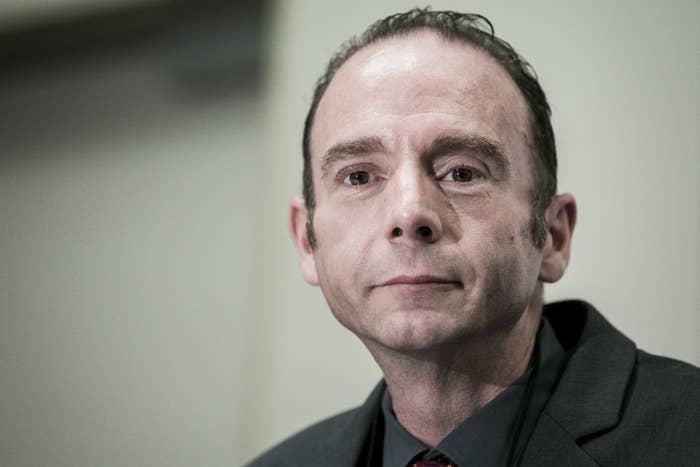
Timothy Ray Brown, the first person to be cured of HIV, died Tuesday of cancer. He was 54.
Brown, widely known as "the Berlin patient," was cured of HIV when he underwent a bone marrow transplant in 2007 to treat leukemia, which he separately had. The donor had a genetic mutation called "CCR-delta 32" that made him resistant to HIV to the point of near immunity. When Brown received the transplant, that genetic resistance was passed on to him.
The discovery was announced at an AIDS conference in 2008 and was celebrated as a cure. Brown remained anonymous for two years, known only as "the Berlin patient" for the city where he was treated, but identified himself in 2010.
He wrote about his decision to abandon anonymity in a 2015 essay published in the AIDS Research and Human Retroviruses medical journal.
"I went from being the 'Berlin Patient' to using my real name, Timothy Ray Brown," he wrote. "I did not want to be the only person in the world cured of HIV; I wanted other HIV+ patients to join my club. I want to dedicate my life to supporting research to search for a cure or cures for HIV!"
Brown became renowned as a symbol of hope for those facing HIV and AIDS diagnoses. Since he was cured, one other person, Adam Castillejo, was announced to be cured of the virus in 2019.
Brown's friend, Mark S. King, who also lives with HIV, told BuzzFeed News that Brown's "greatest hope was that he would not be the only one," and that many more people would join him in being cured.
"He did not live to see that promise fulfilled," King said. "But it was immeasurable, the impact he had on the hopes and the morale of people living with HIV like me. We projected so much onto Timothy, like, oh my gosh, maybe one day I could be cured."
Going public wasn't an easy decision for Brown, but "he realized the power of becoming a symbol of hope and an advocate for further research," King said.
"That he stepped out of his comfort zone to become a symbol for millions of people around the world is not an easy assignment," King said. "This was a modest man of very humble means who was just trying to stay alive. He never asked for the spotlight, and when he needed to step into it to give us this symbol of hope, he did so willingly and very graciously."
Brown died Tuesday of a recurrence of leukemia at his home in Palm Springs, California, where he had been receiving hospice care. His partner, Tim Hoeffgen, was by his side.
King said he last spoke to Brown on the phone about a week and a half before he died.
"As any long-term HIV survivor will tell you, we've had a lot of last calls with people," King said. "What you learn is it's not the final phone call that matters, it's the hundred phone calls before that ... and that's what I choose to remember, the friendship I got to have with him over the years."
Brown, who was born in Seattle, was diagnosed with HIV in 1995 while living in Berlin. He and Hoeffgen met in Henderson, Nevada, in 2013, after he had gone public about his cure, Hoeffgen wrote in a Facebook post announcing Brown's death.
"I was instantly attracted to his smile, wit, handsome face, and very sweet nature," Hoeffgen wrote. "We enjoyed being around each other all the time so I asked him to move in with me six months later."
Brown loved traveling the world, watching the news, going to the movies, and "was a happy and gentle soul but he did get cranky if he didn’t have his double espresso in the morning," Hoeffgen wrote.
"I am truly blessed that we shared a life together but I’m heartbroken that my hero is now gone," Hoeffgen wrote.
In a statement on Wednesday, the International AIDS Society extended its condolences to Hoeffgen and thanked Brown and his doctor for how much they contributed to medical research.
“We owe Timothy and his doctor, Gero Hütter, a great deal of gratitude for opening the door for scientists to explore the concept that a cure for HIV is possible," the IAS said.
The treatment that cured Brown's and Castillejo's HIV cases is "not a viable large-scale strategy for a cure, [but does] represent a critical moment in the search for an HIV cure," Sharon Lewin, an HIV researcher and the president-elect of IAS, said in the statement.
“Timothy was a champion and advocate for keeping an HIV cure on the political and scientific agenda," Lewin said. "It is the hope of the scientific community that one day we can honour his legacy with a safe, cost-effective and widely accessible strategy to achieve HIV remission and cure using gene editing or techniques that boost immune control.”
